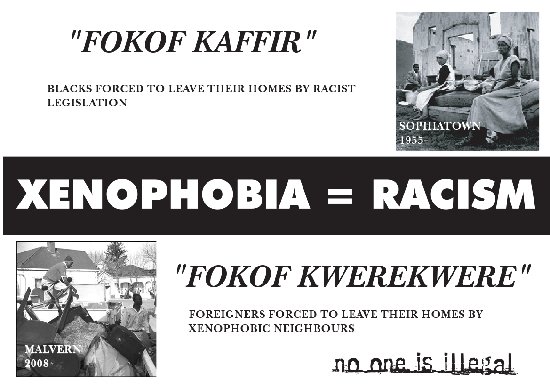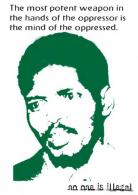Xenophobia is one of the fiercest challenges faced by the post-1994 democratic order of South Africa. The build-up of anti-foreigner hate crimes culminated on May 12, 2008, when a series of riots broke out. Starting in Alexandra Township north-east of Johannesburg, the violence spread throughout Gauteng and, soon, xenophobic purges were taking place throughout the country. For the first time under an ANC administration, the President-elect, Thabo Mbeki, ordered the military into the streets to support police in their efforts to control violent unrest. Most foreigners displaced, injured or even killed during this dark time were refugees. Tens of thousands of displaced persons were housed in temporary places of safety, including numerous police stations, community halls and churches. After several weeks, refugees were moved into specially established temporary camps. Many of these were remote, with poor infrastructure. The humanitarian crisis continued to escalate.
The emergence of ‘Buyelekhaya'
Foreigners entering impoverished areas had been blamed for crime, unemployment and HIV/AIDS. This, in turn, undermined the already-vulnerable status of African refugees. In 1995, efforts to purge non-South Africans emerged in Alexandra Township with a campaign called ‘Buyelekhaya' (go back home). Isolated cases of xenophobic vengeance increased their frequency over the course of the decade, and by August 2006, 47 Somali traders had been killed in the Western Cape. Between 2000 and 2008, 67 people died as a result of violence related to xenophobia - but in May 2008, the death toll exploded to 62 - including 21 South Africans. The problem has never been adequately resolved, and xenophobia in South Africa has perpetuated a negative cycle of violence in place since apartheid. In 1988, a study on the refugee problem in the Natal province was conducted, providing an interesting comparative case study of the plight of South African refugees:
"(They) have been treated as second class citizens; they have been used as machines... now they are refugees - people forced to abandon what little they have in terms of security and to become dependent on foreigners they hardly know... refugees may be seen as a real threat when they enter an area, which is already unable to meet its own residents' needs... violence is regarded as the norm, and is seen as a solution. It becomes the one area of life over which the individual has some control, and is used for self-assertion... should the violence miraculously cease tomorrow (then) we are still looking at a future of three generations of traumatized people. The work to be done is enormous, and the time to begin is now."
‘Death, devastation and destruction - refugees in Natal', Wendy Leeb, Centre for Adult Education, University of Natal, Pietermaritzburg, AL2457_V3, SAHA Original Collection
SAHA and xenophobia
The South African History Archive is a human rights archive documenting the struggles for justice of all people living in South Africa. In recognition of the ongoing threat of anti-foreigner human rights violations, a call is being made for all material related to xenophobia and the plight of African refugees, including primary sources, photographs, posters and ephemera.
If you have material you would like to donate, please contact the Archives at SAHA.

Ephemera emerging in opposition to the May 2008 xenophobic attacks, AL2540 :: The SAHA Ephemera Collection








